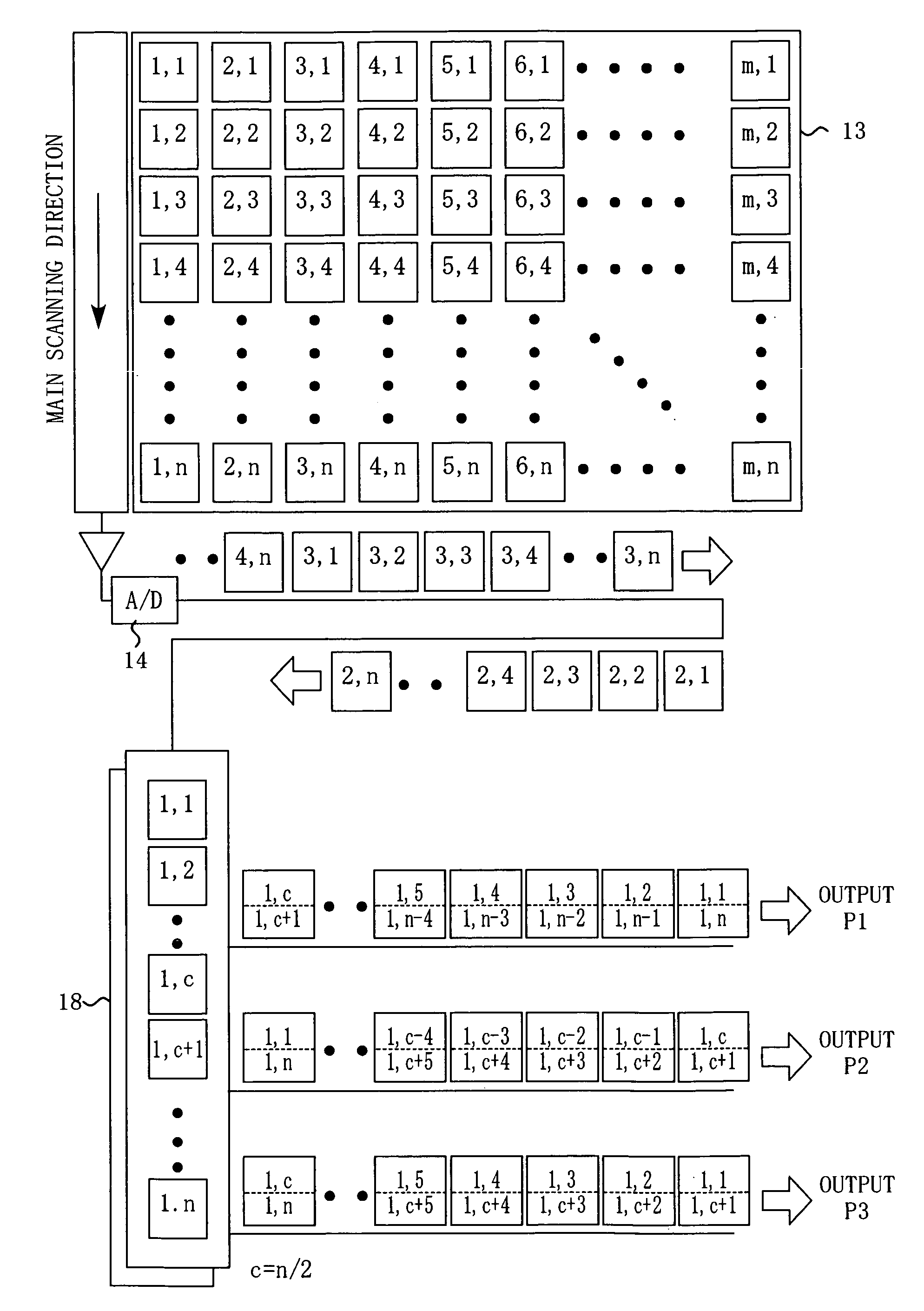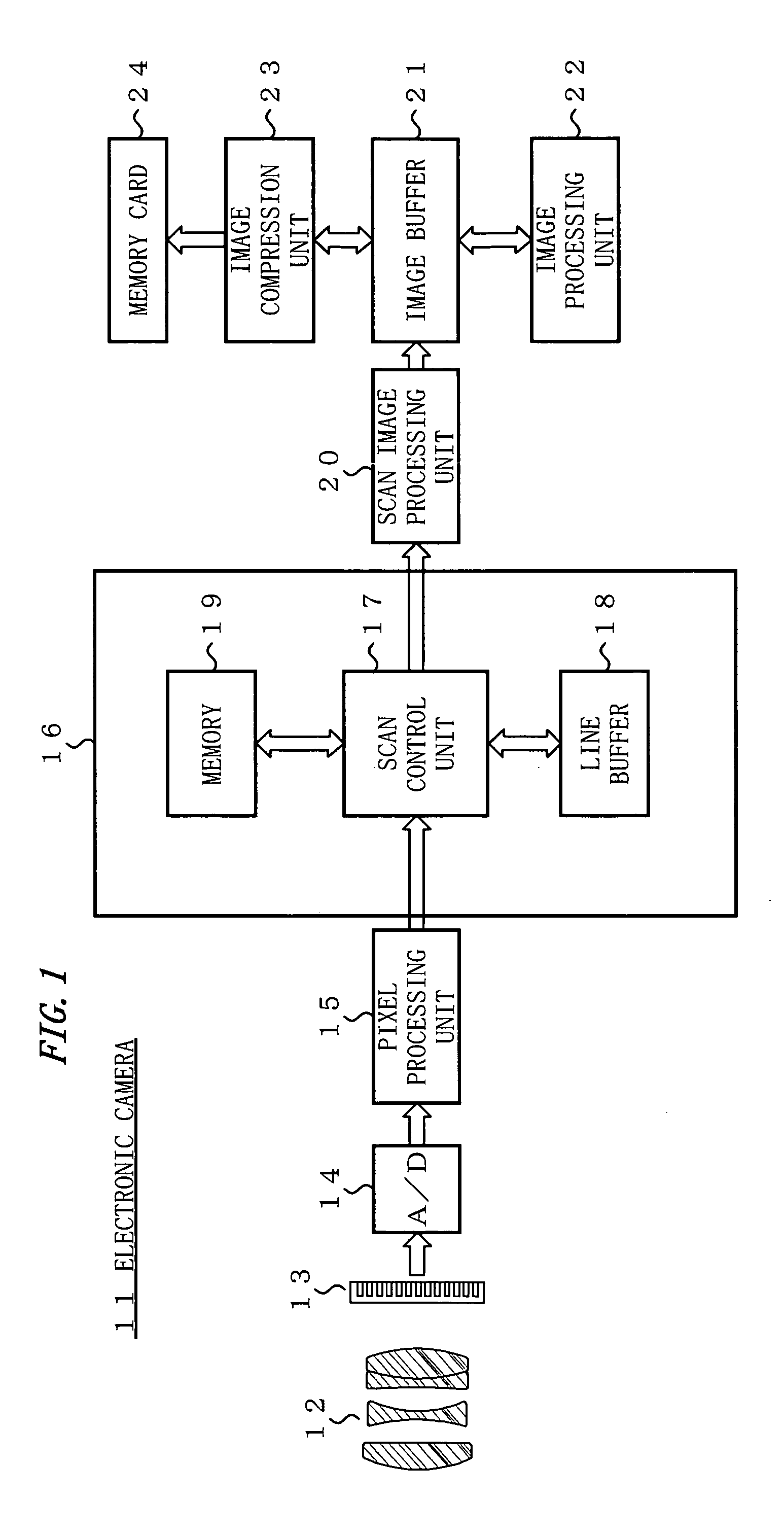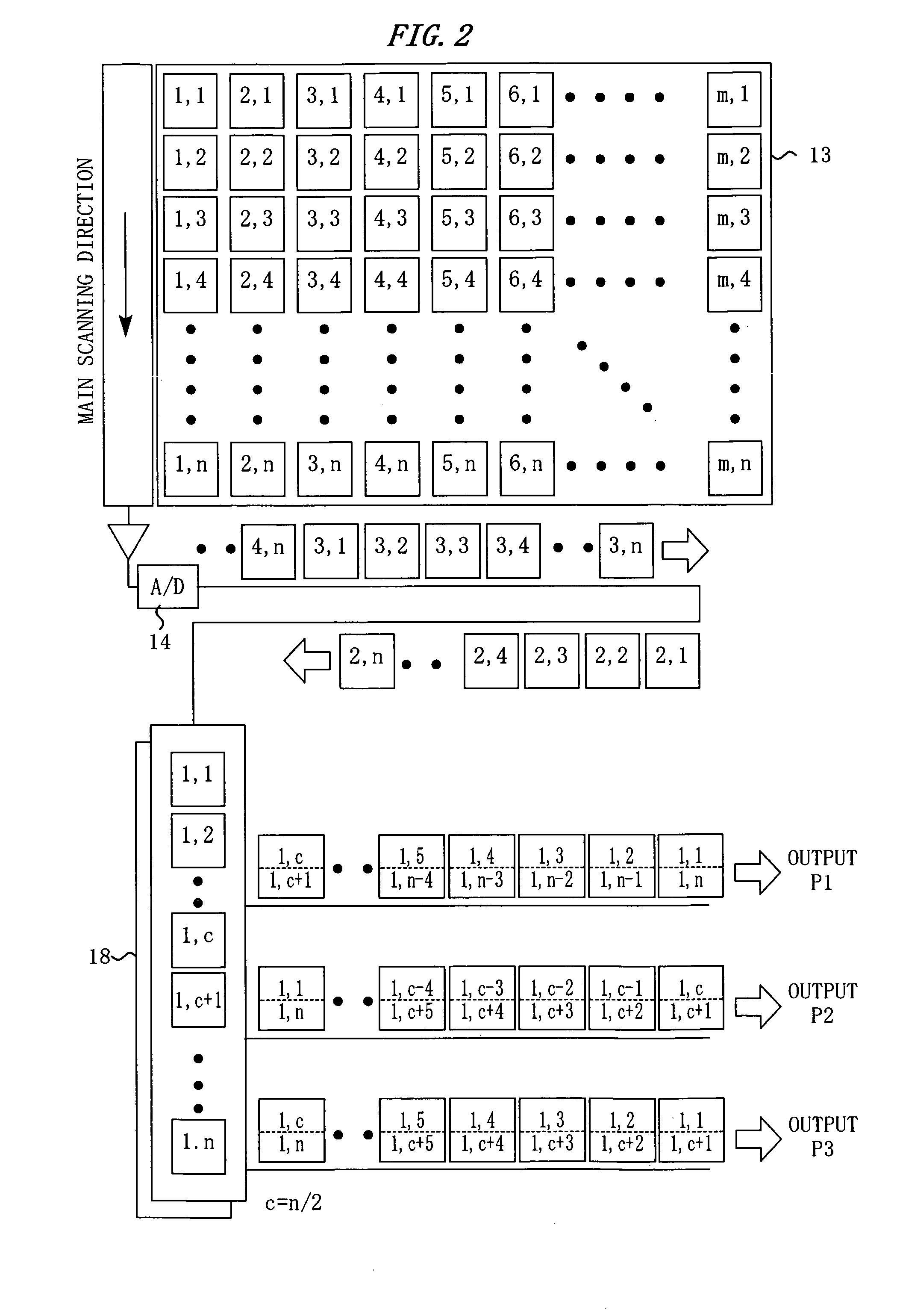Scan conversion device and electronic camera
- Summary
- Abstract
- Description
- Claims
- Application Information
AI Technical Summary
Benefits of technology
Problems solved by technology
Method used
Image
Examples
embodiment 1
[0040]FIG. 1 shows the configuration of an electronic camera 11.
[0041] Referring to FIG. 1, a lens 12 is mounted on the electronic camera 11. A light-receiving surface of an imaging device 13 is arranged in an image space of the lens 12.
[0042] Pixel signals output from the imaging device 13 are converted into digital signals by an A / D converter 14 and are then input to a pixel processing unit 15 sequentially. The pixel processing unit 15 performs one or more processings feasible for each one of the pixel signals independently (e.g., correction for a defective pixel) in a pipeline manner. The thus processed pixel signals are input to a scan conversion device 16.
[0043] The scan conversion device 16 includes a scan control unit 17, a line buffer 18, and a memory 19. The line buffer 18 temporarily stores pixel signals corresponding to a read-out line in a main scanning direction of the imaging device 13. The memory 19 is a buffer which can be read from and written to at least on a pi...
embodiment 2
[0080] Next, the imaging device 13 in the electronic camera 111 scans the pixel signals and outputs them on a plurality of channels.
[0081]FIG. 6 shows a pixel arrangement in an imaging device 13. The imaging device 13 generates pixel signals of n pixels in the vertical direction×m pixels in the horizontal direction. The pixel signal is a color signal containing information on one of colors, Gr, Gb, R, and B. These colors are arranged in a bayer pattern.
[0082]FIG. 7 shows four scan outputs chA, chB, chC, and chD of the imaging device 13.
[0083] As shown in FIG. 7, the imaging device 13 divides pixel signals of the pixels arranged as shown in FIG. 6 into a first field formed of R lines and Gr lines and a second field formed of Gb lines and B lines and reads the pixel signals out by sequentially reading the first field and the second field, i.e., performing reading twice.
[0084] R components of the first field are divided into two groups that are respectively read out on two scan out...
PUM
 Login to View More
Login to View More Abstract
Description
Claims
Application Information
 Login to View More
Login to View More - R&D
- Intellectual Property
- Life Sciences
- Materials
- Tech Scout
- Unparalleled Data Quality
- Higher Quality Content
- 60% Fewer Hallucinations
Browse by: Latest US Patents, China's latest patents, Technical Efficacy Thesaurus, Application Domain, Technology Topic, Popular Technical Reports.
© 2025 PatSnap. All rights reserved.Legal|Privacy policy|Modern Slavery Act Transparency Statement|Sitemap|About US| Contact US: help@patsnap.com



